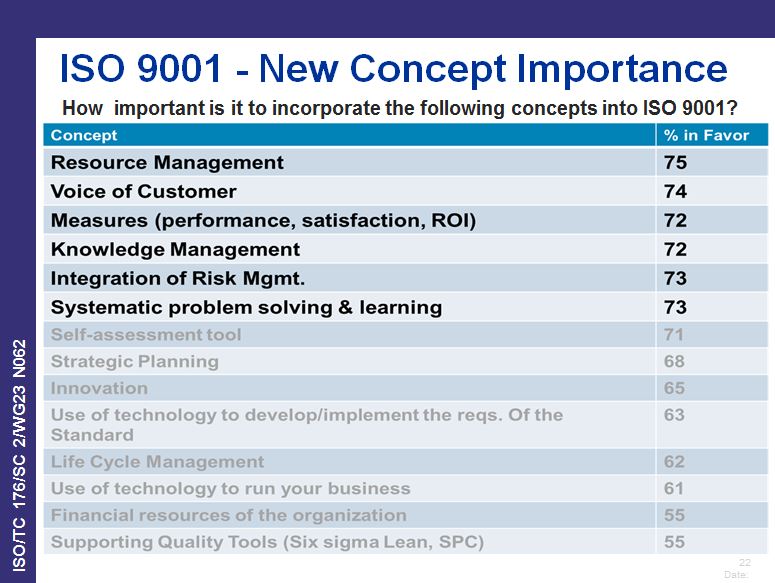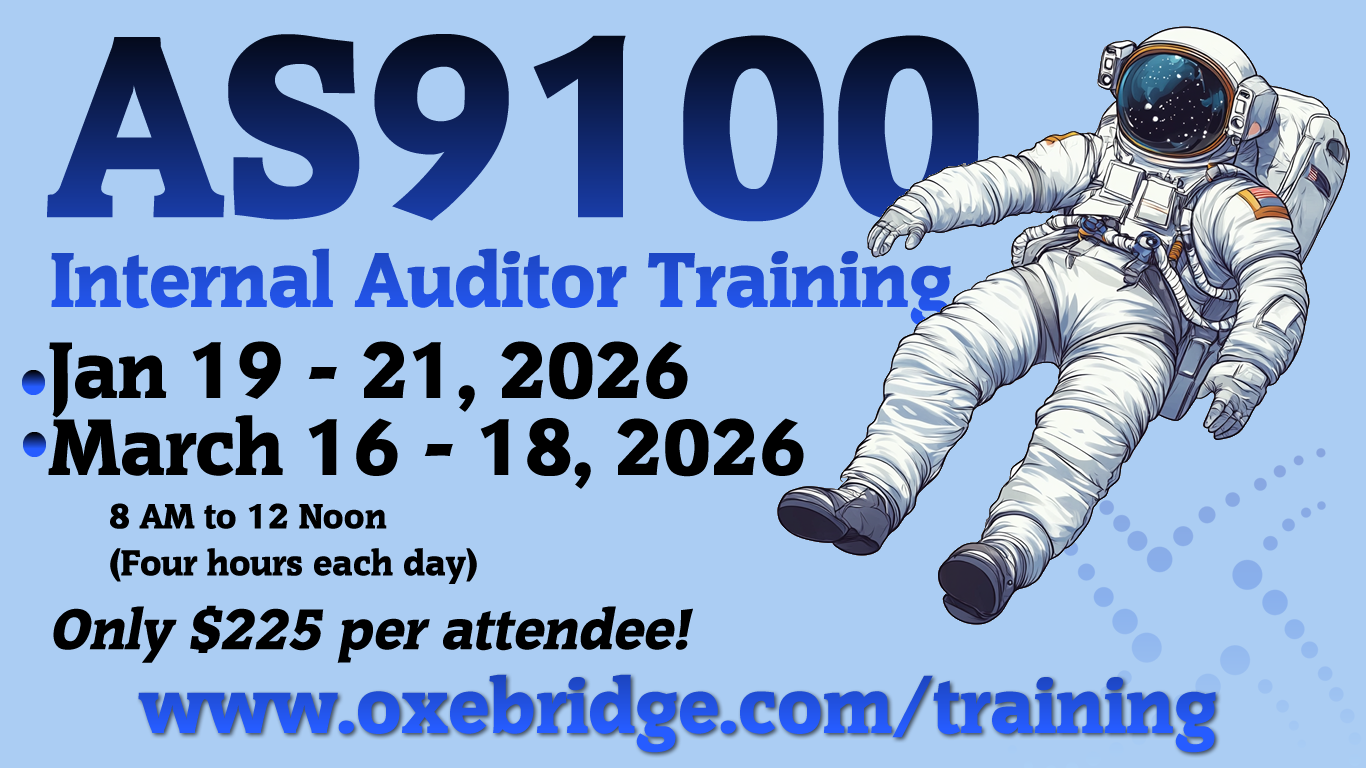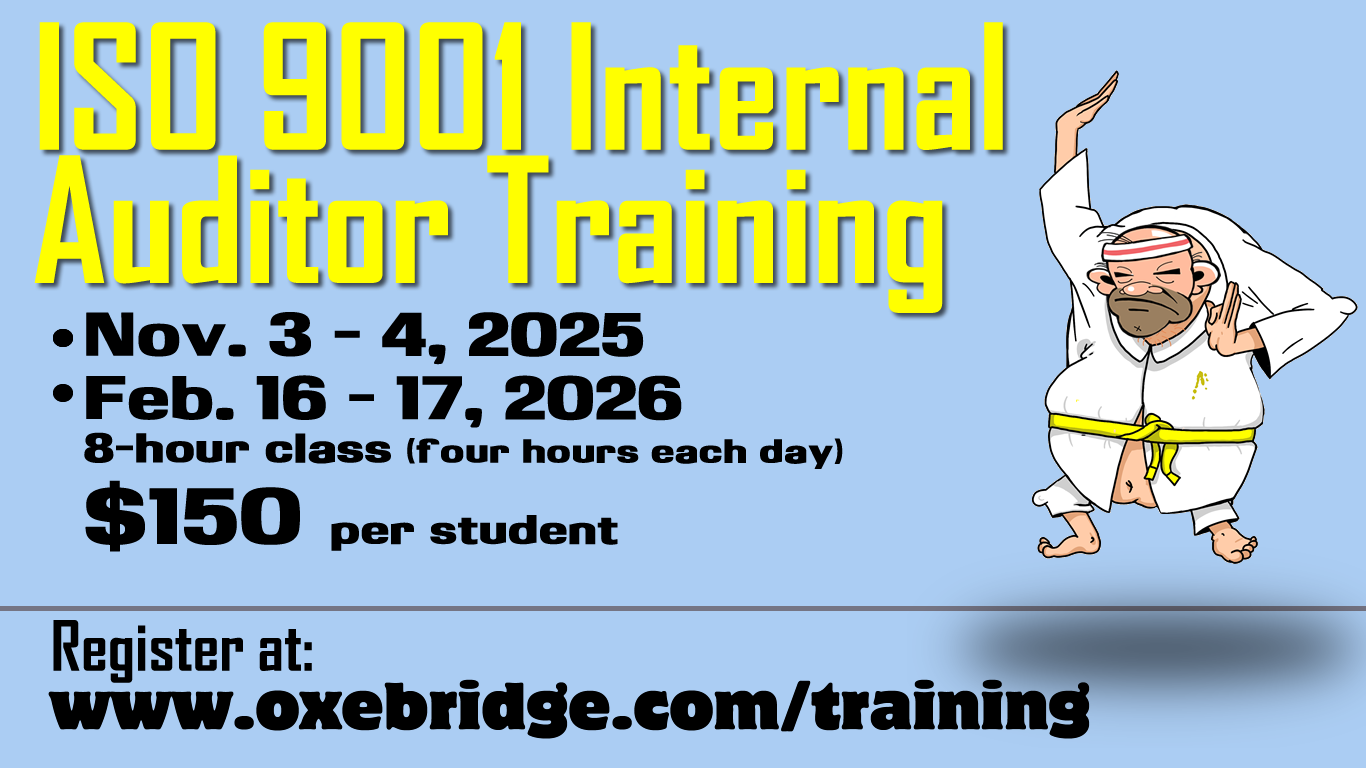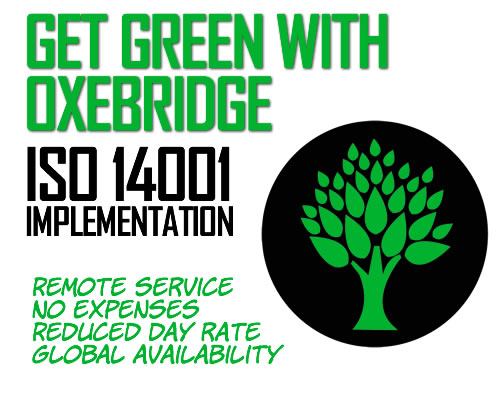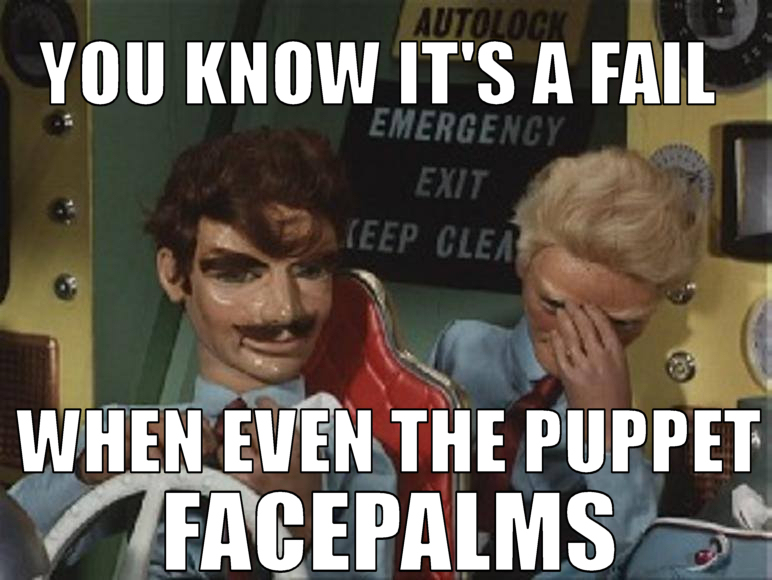 How does the latest version stack up against ISO’s original intentions for 9001:2015? Not so hot, it seems.
How does the latest version stack up against ISO’s original intentions for 9001:2015? Not so hot, it seems.
Back in 2012 and 2013, TC 176 claimed the standard’s Design Specification called out the following requirements. Let’s take a look at how those original intentions were realized in the latest DIS.
Design spec aim: “Take account of changes in quality management systems practices and technology since its last major revision (2000) and to provide a stable core set of requirements for the next 10 years or more.”
Result: new technology is utterly ignored; no consideration of modern information control methods, ERP systems, Lean approaches or technological advances.
Design spec aim: “Ensure that requirements in this standard reflect the changes in the increasingly complex, demanding, and dynamic environments in which organizations operate.”
Result: Again, nothing in the DIS moves ISO 9001 towards the 21st century, and instead just uses ever-more-vague language to define what are, essentially, 1950’s requirements from MIL-Q-9858, warmed over.
Design spec aim: “Ensure that requirements are stated to facilitate effective implementation by organizations and effective conformity assessment, as applicable”
Result: Utter fail. ISO is planning an official interpretation document (tentatively called 9002, I believe) which completely concedes defeat on this point. If you need an interpretation guide, than the original document is acknowledged to be poorly worded. Furthermore, 9001:2015 will be the worst version ever in ISO’s history as it pertains to conformity assessment, given the dogged insistence to include unauditable requirements for “social and psychological factors” in the workplace, impossibly vague language regarding risk, confusing language regarding knowledge management, etc.
Design spec aim: “Increase confidence in an organization’s ability to provide conforming goods and/or services”
Result: Maybe. But this will eventually be based on how companies interpret the standard, and then implement those interpretations, not due to anything in the standard itself. Besides, ISO will just back off of any responsibility later anyway, insisting (as they always do) that ISO 9001 isn’t a product certification scheme, so it’s not a guarantee of quality.
Design spec aim: “Enhance an organization’s ability to satisfy its customers.”
Result: See the previous entry. No guarantees here.
Design spec aim: “Enhance customer confidence in quality management systems based on ISO 9001.”
Result: Unlikely, given the amount of controversy and clearly non-democratic way in which 9001:2015 was developed.
None of the design spec requirements were met with a home run, slam dunk (to use a mixed sports metaphor.) But how about an analysis of other claims made by ISO in the early days?
One such claim was that ISO was going to use the previous User Survey to guide the new version’s content development. Specifically, TC 176 was fond of trotting out this graphic:
Alas, Annex SL saw an end to all of that User Feedback nonsense. Let’s analyze where the DIS of 9001 landed as it compares to each item:
- Resource management: no significant changes from 9001:2008
- Voice of the customer: no significant changes from 9001:2008
- Measures: other than saying that all objectives must be measurable, no significant changes from 9001:2008
- Knowledge management: they did address this, at least. Just poorly.
- Integration of risk management: utter fail. Rather than understand what risk management is, they merely re-branded 9001:2008’s “preventive action” clause as “risk-based thinking” and did this in response to Annex SL’s mandate, not the User Survey. The DIS is still confused on whether it wants to just identify risks, or to manage them, too.
- Systematic problem solving and learning: barely addressed. The DIS has some language on lessons learned, but that’s about it.
- Self-assessment tool: not addressed
- Strategic planning: not addressed; it’s mentioned passively under “Context of the Organization,” but not as a part of 9001 itself.
- Innovation: not addressed
- Use of technology to develop/implement the requirements: not addressed
- Life cycle management: not addressed
- Use of technology to run your business: not addressed
- Financial resources: not addressed
- Supporting quality tools: not addressed
So once again we find the ISO 9001 development process was largely derailed by the mandate of Annex SL and the ISO Technical Management Board, which was obsessed with aligning ISO products over having them meet the desires or concerns of its customers.
An interesting aside: ISO TC 176 is reportedly ISO 9001 certified itself. (I haven’t checked lately to see if that’s current; let me know if you know more than I do on this.) How could they maintain ISO 9001 certification if there is evidence they blew off customer feedback in exchange for a mandate from the parent organization? How can they maintain certification if the design inputs (the design spec) was clearly ignored when developing the actual product?
Something to explore in the future, I suppose.
Christopher Paris is the founder and VP Operations of Oxebridge. He has over 35 years’ experience implementing ISO 9001 and AS9100 systems, and helps establish certification and accreditation bodies with the ISO 17000 series. He is a vocal advocate for the development and use of standards from the point of view of actual users. He is the writer and artist of THE AUDITOR comic strip, and is currently writing the DR. CUBA pulp novel series. Visit www.drcuba.world


